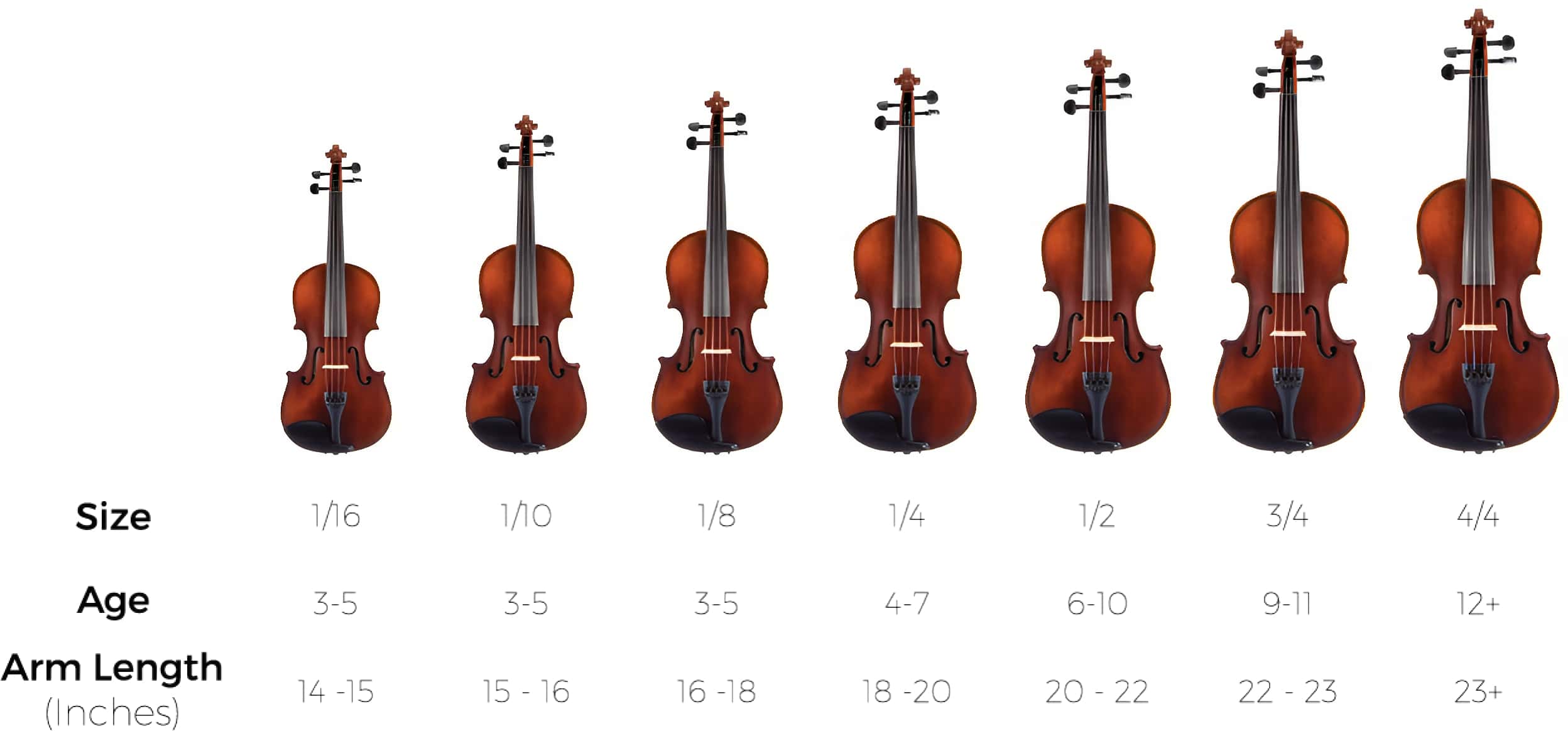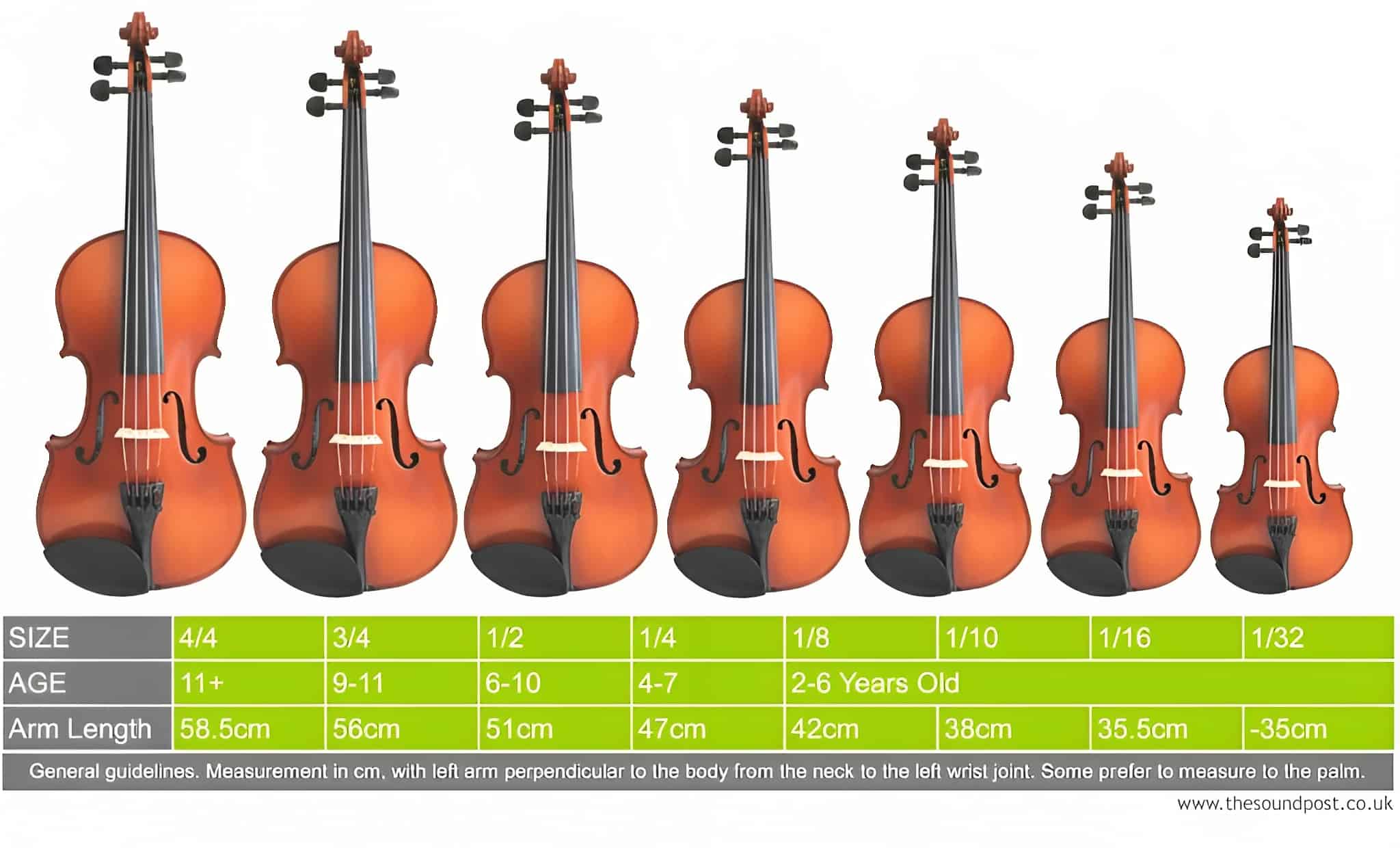When your child picks up the violin to play “Twinkle, Twinkle” for the first time, one crucial success factor hides in a subtle detail: choosing the right size. If a violin is too small, the wrists bend; if it is too large, shoulder and back pain become inevitable, and a love of music soon turns into restlessness. Yet parents and adult beginners often struggle to distinguish the numbers from 1/32 to 4/4 without getting confused. That’s where TypeCalendar’s Violin Size Chart collection comes in a print‑plus‑digital toolkit that guides you from the first tape measure reading to selecting a case and heading home.
Table of Contents
Designed to Reduce Measurement Error to Zero
![Free Printable Violin Size Chart [PDF] 1 Violin Size Chart](https://www.typecalendar.com/wp-content/uploads/2023/08/Violin-Size-Chart.jpg 1920w, https://www.typecalendar.com/wp-content/uploads/2023/08/Violin-Size-Chart-300x169.jpg 300w, https://www.typecalendar.com/wp-content/uploads/2023/08/Violin-Size-Chart-1024x576.jpg 1024w, https://www.typecalendar.com/wp-content/uploads/2023/08/Violin-Size-Chart-768x432.jpg 768w, https://www.typecalendar.com/wp-content/uploads/2023/08/Violin-Size-Chart-1536x864.jpg 1536w, https://www.typecalendar.com/wp-content/uploads/2023/08/Violin-Size-Chart-1200x675.jpg 1200w)
Each template in the collection was designed to cross-reference three separate variables, such as arm length, hand width and body type, rather than relying on generalizations based solely on age or height. In the color‑gradient charts, sleeve lengths under 36 cm (≈ 14 in.) appear in pastel yellow, while those over 44 cm (≈ 17 in.) show in warm orange; the visual cues eliminate the need to read the fine print. Models focused on child ergonomics add scaled wrist‑to‑elbow silhouettes beside each violin image. While measuring, the teacher can ask, “Does your arm reach all the way to here?”
45+ Violin Size Chart Templates – TypeCalendar Collection
- Full Body Size Chart: Lists every size from 1/32 to 4/4, plus case recommendations and string‑tension notes.
- Color‑Coded Age‑to‑Sleeve Matrix: A poster for school music rooms—five age groups, five colors.
- Luthier Reference Card: 300 gsm card stock with crop marks; sturdy enough to stay by the bench.
- Home Measurement Guide: A step‑by‑step photo PDF for parents that reduces error when positioning the tape measure.
- Twin Charts (Violin–Viola): Dual charts that spare young players the confusion of switching between instruments.
In all, more than 45 themes come in one folder, and every palette, frame style, and font is fully editable.
Print and Digital Flow – Flexible Use from Card to Poster
All templates are available for download in PDF (A4 / US Letter), Word (.docx), Google Docs and full vector SVG format.
- One Print, Many Uses: Each violin chart embeds a true‑to‑scale 35 cm (13.8 in.) ruler on the left margin, letting teachers measure directly with the paper instead of hunting for a tape. Home users can fold the A4 sheet in half to create a pocket guide the dotted “fold line” is printed right on the page.
- Thermal Printing for the Luthier’s Bench: Roll‑feed mode in the SVG files outputs narrow strips for 58 mm POS printers; sellers can staple the ruler to the case for a personal touch.
- Dynamic Version for Online Lessons: In the Google Sheets file, type an arm‑length value and the recommended violin size and ideal shoulder rest range populate automatically in the next column.
- Mobile & Social Sharing: Color‑coded PNG strips (1080 × 1920) invite quick engagement “Place your arm on the paper, then swipe” makes a perfect Instagram Story CTA.
- Paper & Durability: For posters, 170 gsm silk matte paper boosts color saturation; for pocket guides, 250 gsm matte coated stock plus matte lamination protects against sweat and pen marks.
Download Now—Start with the Right Tone
Download the Violin Size Chart collection once and reuse it as a classroom poster, a home measuring guide, or a reference card at the luthier’s counter. Once the first bow is drawn, the path to a clear‑sounding, comfortable instrument is only a few measurements and one print‑out away.
































![Free Printable Pie Chart Templates [Excel, PDF, Word] Maker 2 Pie Chart](https://www.typecalendar.com/wp-content/uploads/2023/06/Pie-Chart-150x150.jpg 150w, https://www.typecalendar.com/wp-content/uploads/2023/06/Pie-Chart-1200x1200.jpg 1200w)
![Free Printable Reward Chart Templates [Word, PDF] Teachers 3 Reward Chart](https://www.typecalendar.com/wp-content/uploads/2023/03/Reward-Chart-150x150.jpg 150w, https://www.typecalendar.com/wp-content/uploads/2023/03/Reward-Chart-1200x1200.jpg 1200w)
![Free Printable Behavior Chart Templates [PDF, Word, Excel] 4 Behavior Chart](https://www.typecalendar.com/wp-content/uploads/2023/02/Behavior-Chart-150x150.jpg 150w, https://www.typecalendar.com/wp-content/uploads/2023/02/Behavior-Chart-1200x1200.jpg 1200w)
